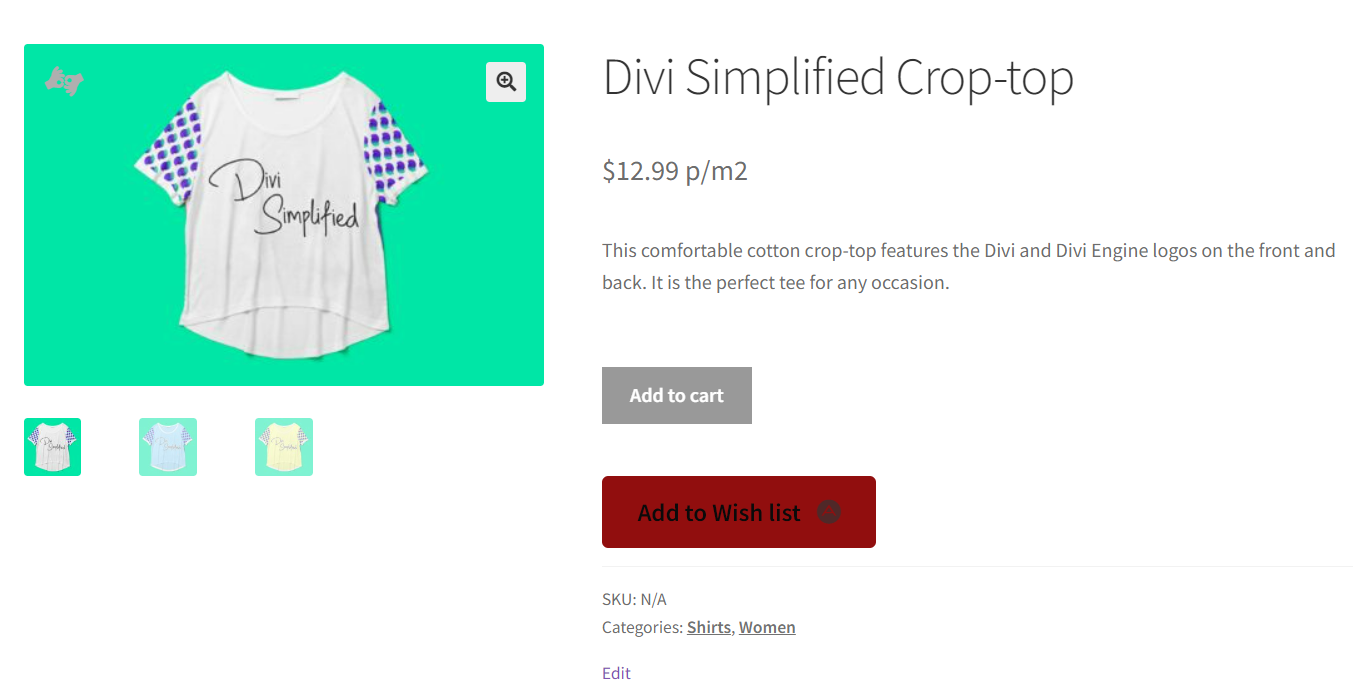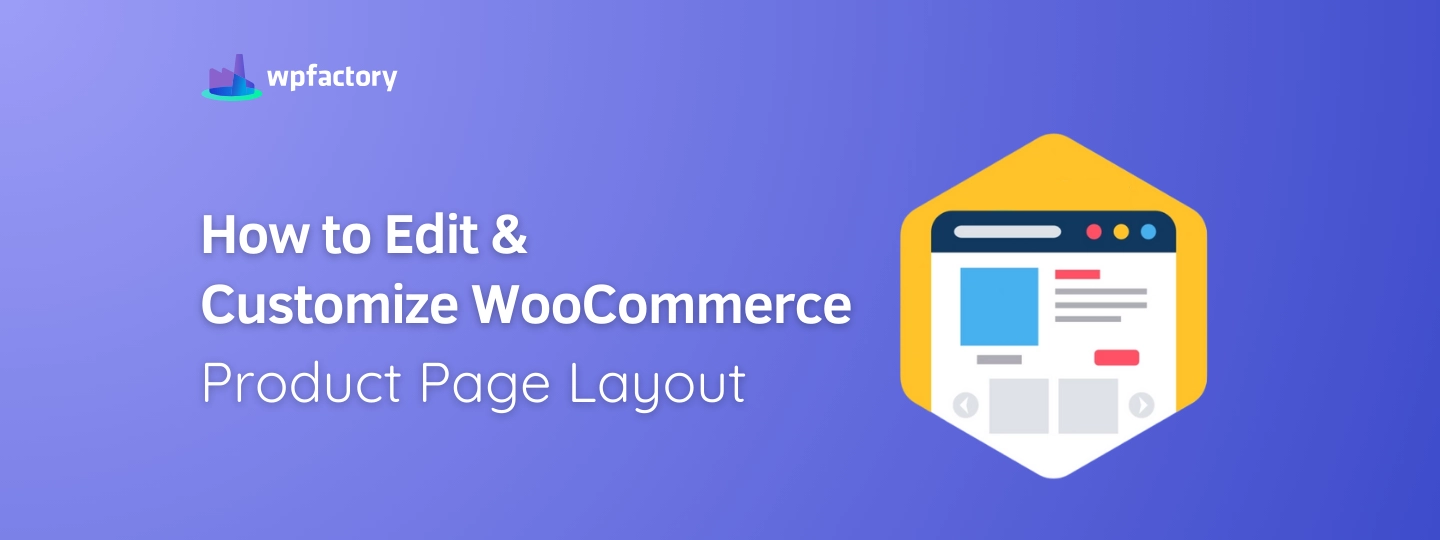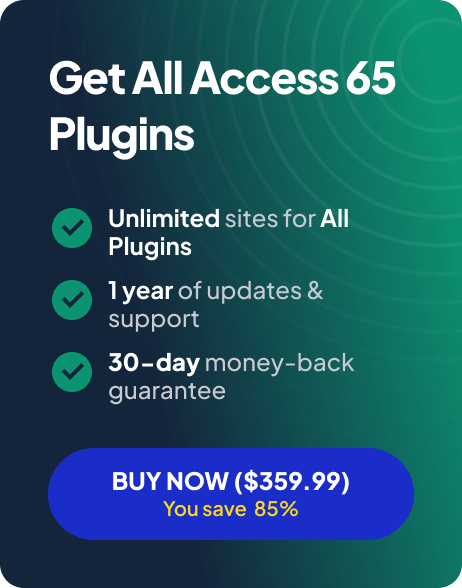How to Edit & Customize WooCommerce Product Page Layout
Product pages are the places where you either convert your visitors into buying customers or where you lose their interest and they start looking for what they want in other stores. So how do you keep your customers interested in what you offer?
Customizing your WooCommerce product pages for maximum sales and conversions can make the difference between a generic store that doesn’t achieve any sales and a unique store that attracts visitors and achieves sales like a money-printing machine.
In this article we’ll discuss everything you need to know about customizing product pages and how you can turn visitors into customers, so let’s get started.
Why Customize The Product Page? Advantages of Customizing the Product Page
From increased conversion rates to improved branding and enhanced user experience, customizing the product page has lots of benefits to make you take that step confidently.
Customizing the product page allows you to align the design with your brand’s visual identity, ensuring a consistent and cohesive look throughout your online store. A cohesive brand presence builds trust and recognition among customers, making your store more memorable.
Tailoring the product page layout and design provides a unique and engaging user experience. Users are more likely to explore and stay on a website that offers a distinctive and user-friendly interface, leading to increased time spent on the site.
Customization enables you to prioritize and showcase key product information more effectively. Users can quickly find essential details such as product features, pricing, and unique selling points, leading to informed purchasing decisions.
Customizing the layout allows for strategic placement of elements, optimizing user navigation and flow. A well-organized product page reduces confusion, making it easier for customers to browse, compare, and add products to their carts.
Tailoring the design and content can focus on optimizing the page for conversions. Clear and compelling calls-to-action, strategically placed buttons, and persuasive product descriptions contribute to higher conversion rates.
There are lots of benefits in customizing product pages, and by correctly customizing product pages you can benefit from each of the product pages to its full potential.
The Default WooCommerce Product Page
Before making any changes, we need to understand what is it that we’re about to change. Understanding the default WooCommerce product page is crucial as it serves as the foundation for any customization efforts.

The default WooCommerce product page consists of multiple components, we’ll discuss them one by one:
-
- Product Title: The product title is a prominent element on the product page, usually located at the top. It serves as the primary identifier for the product.
- Product Price: The product price is a critical component for customers assessing the value of a product. It is commonly placed near the product title.
- Product Images: High-quality images are essential for showcasing products effectively. By default, WooCommerce allows for the display of product images with zoom and lightbox features.
- Product Description: The product description provides detailed information about the product, including its features, benefits, and usage instructions.
- Add-to-Cart Button: The add-to-cart button is a call-to-action (CTA) element that allows customers to easily add a product to their shopping cart.
- Product Meta Data: Meta data includes additional information such as product categories, tags, and SKU (Stock Keeping Unit). These details help organize and classify products.
Customization Options for WooCommerce Product Pages
When it comes to customization options for WooCommerce product pages there are many options to consider:
- Using plugins
- Using page builders
- Using custom code
Each one has its advantages and limitations, so you will need to pick which method is more suitable for you and achieves your goals.
Using plugins is most suitable for those who have limited technical experience and don’t want to get their hands dirty with code while customizing their product pages. Many plugins have lots of features that allow you to add new elements, modify existing ones, and enhance the overall functionality of your product pages. Installing and activating a plugin is typically a quick process, enabling you to implement changes without much delay.
The limitation of plugins is that too much dependency on plugins can lead to some trouble, conflicting plugins can cause compatibility issues that will impact the functionality of your site. Plugins could also impact the performance of your site making your store slower which ultimately may impact the conversion rates as users may abandon your store because of slow load speeds.
Page builders have the advantage of being easy to use as they offer drag-and-drop customization options to make your website look exactly the way you want it to be, they allow for visual editing which means you will see the impact of the changes you make to the site instantly allowing for instant feedback. Page builders are designed for users who may not have coding skills, allowing for customization without writing code.
The limitation of page builders is that they might not be compatible with the theme of your store, and it might also impact the performance of your store as it might add unnecessary code to your website.
The last, but not least, option is to add custom code to your store and edit the CSS of your website to make your product page look the way you want it to. Writing custom code allows for precise control over every aspect of the product page, meeting highly specific design requirements. Custom code can be optimized for performance, ensuring that only necessary elements are loaded for a faster website.
The limitation is that knowledge of coding is required to make these edits, and it needs to be checked with each theme or WordPress update to make sure it’s compatible with it, and it needs to be thoroughly tested to make sure nothing breaks when these elements are implemented.
Customization Tips of Product Pages for Maximum Conversions
Now that we’ve described the tools and the options to customize your product pages, we’ll guide you through how to customize your product pages for maximum conversions.
Descriptive Product Title
Clear and concise product titles that highlight the benefits of the product can help attract customers’ attention to your product.
Compelling Product Description
Making your product description scannable yet descriptive is the optimal output when it comes to writing product description, make sure to use brand consistent tone, and relevant keywords for SEO.
High-Quality Feature Images
Images are everything in e-commerce, it’s hard to convince customers to buy a product they can’t see or have low-quality images of it, include photographed products from all angles, display every color and material, use product videos if applicable, and make sure to use simple backgrounds for maximum conversions.
Clear and Prominent Calls to Action (CTAs)
Use bold and contrasting colors for your CTA buttons. This helps them stand out on the page and attracts the user’s attention. Position CTAs strategically “above the fold” to ensure they are visible without scrolling. Consider placing them near product information and images. Implement sticky CTAs that remain visible as users scroll down the page. This ensures that the call to action is always accessible, enhancing user convenience.
Add Social Proof:
Display star ratings prominently on the product detail page. They provide a quick visual representation of product popularity and satisfaction. Showcase customer testimonials and product reviews close to the CTA. Positive feedback from other customers builds trust and influences purchasing decisions.
Clear Return and Shipping Policies:
Display shipping and return information prominently on the product detail page. Consider placing this information near the CTA to address concerns before checkout. Use visual icons to represent shipping features, such as free shipping or express delivery. Icons can quickly convey information to users.
Optimize Page Loading Speed:
Compress and optimize images and videos to reduce their file sizes. Use tools or plugins to ensure that media content doesn’t slow down your page. Prioritize mobile optimization. Given the prevalence of mobile shopping, ensure that your product detail pages load quickly and seamlessly on various devices.
Add Product Recommendations:
Implement personalization algorithms that analyze user behavior and preferences to provide tailored product recommendations. This enhances the relevance of suggested items. Showcase similar products, especially those frequently bought together. This encourages upselling and helps customers discover related items.
Summary:
Customizing product pages can drastically help in increasing conversion rates and store revenue as the default product pages might not be perfectly optimized for conversions.
Whether you decide to use plugins, page builders, or using custom code make sure to add the right elements to your product pages and page speeds to be optimized for optimal performance so you can get the full potential out of your store and products.










